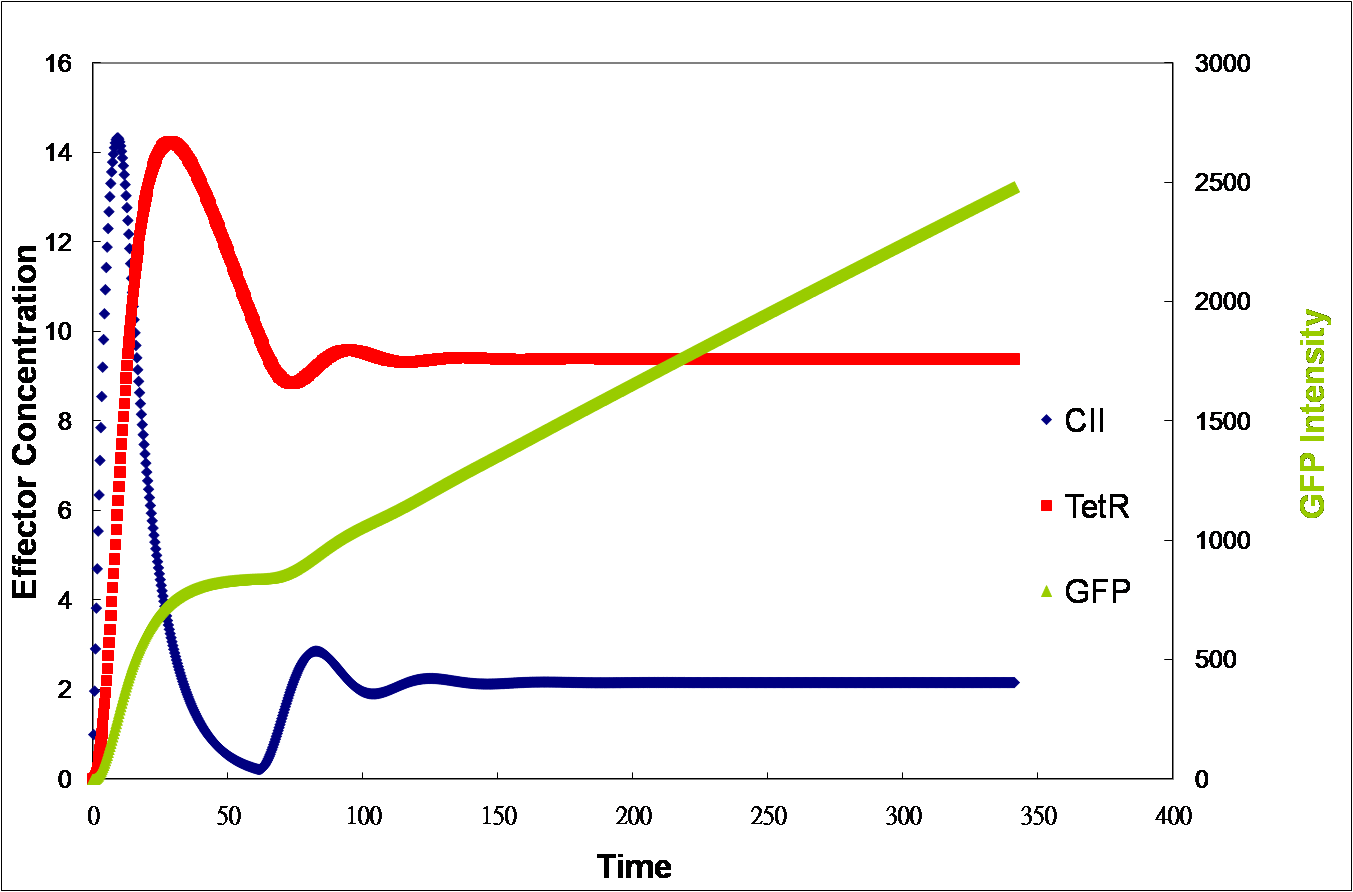Team:NYMU-Taipei/Project/Removal/Modeling
From 2009.igem.org
Revision as of 21:03, 21 October 2009 by Daadracula (Talk | contribs)
Contents |
Oscillator Modelling 1
- TetR concentration
- CII concentration.
- 1/3min intervals.
Variables Used
| Protein Name | Half-life (min) | Promoter | Promoter Strength (relative) | |
|---|---|---|---|---|
| Inducer | CII | 8 [1] | pRE | 0.025 (est) |
| Repressor | TetR | 40 (est due to LVA tag) | pTet | 1 |
| Reporter | GFP | 2160 [2] |
Time segment used for the calculation: 1/3mins Maximum amount of Repressors that can stop promoter activity: 10 (an arbitrary number)
Formulas used
Calculating the strength of the pTet promoter when there are repressors around:
pTetcurrent = pTetmax*1-1/Tetmax*[TetR] ----- (1)
Calculate the amount of each protein produced:
CII = pTetcurrent ----- (2) TetR = [CII] * pREmax ----- (3) GFP = [CII] pTetcurrent ----- (4)
The calculation of amount of substrates remaining w.r.t the half lives:
[CII] = [CII] x 0.5(Δt / CII-t1/2) ----- (5) [TetR] = [TetR] x 0.5(Δt / TetR-t1/2) ----- (6) [GFP] = [GFP] x 0.5(Δt / GFP-t1/2) ----- (7)
Conclusion
The only variables are:
- The relative strength of pRE relative to pTet (since it has not been measured yet)
- the weaker pRE is relative to pTet, the slower the oscillator dampens.
- Maximum amount of repressor such that adding more repressors will not affect the strength of pTet anymore.
- Amplitude of TetR oscillation is directly proportional.
References
[1] Shotland, et al: [http://www.pubmedcentral.nih.gov/articlerender.fcgi?artid=94496 Proteolysis of Bacteriophage λ CII by Escherichia coli FtsH (HflB)]. J Bacteriol. 2000, 182(11): 3111–3116
 "
"
